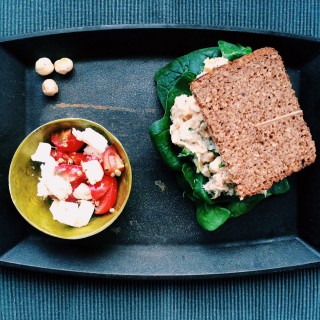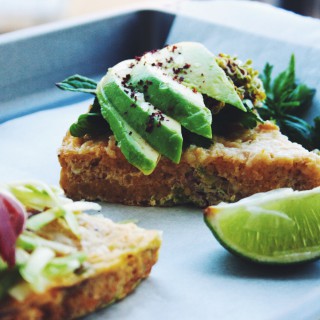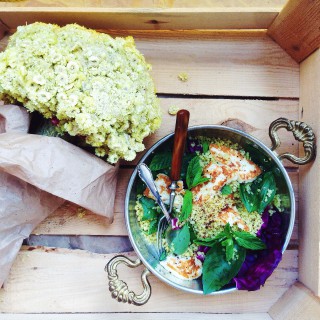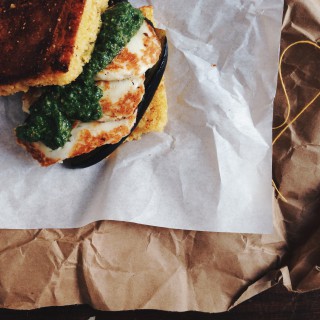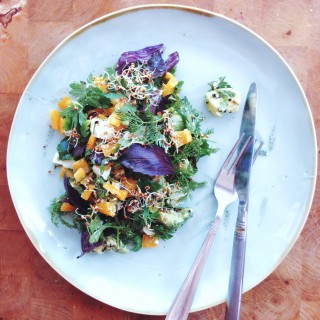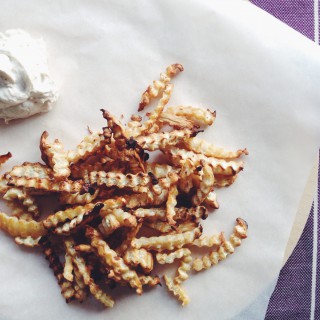Sorry, this entry is only available in German.
Fructoseintoleranz: Alle Symptome Und Beschwerden auf einen Blick
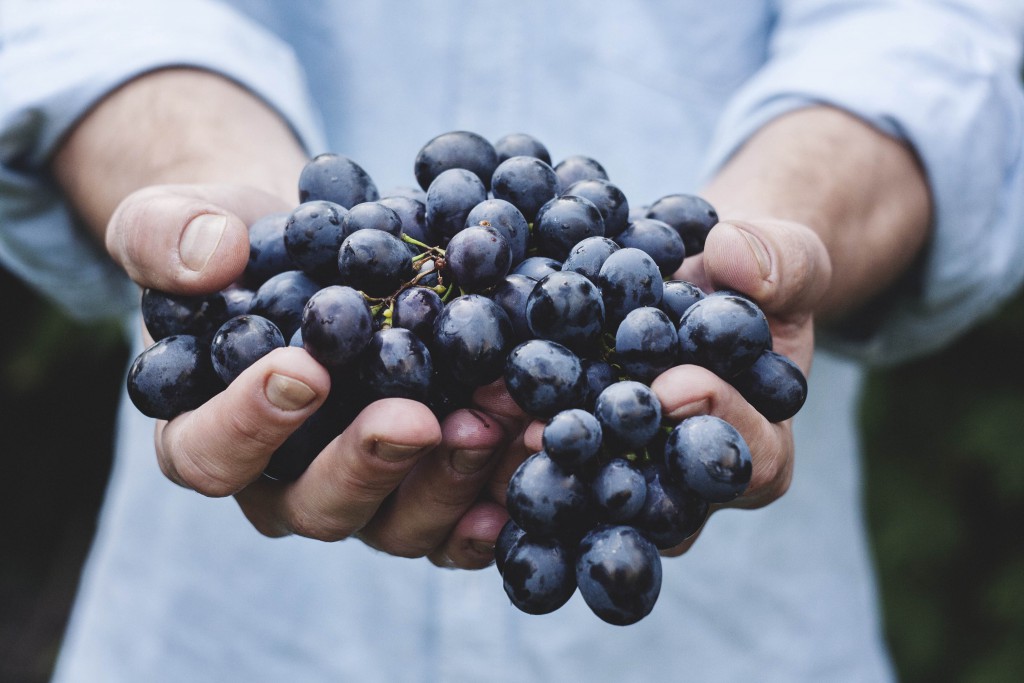
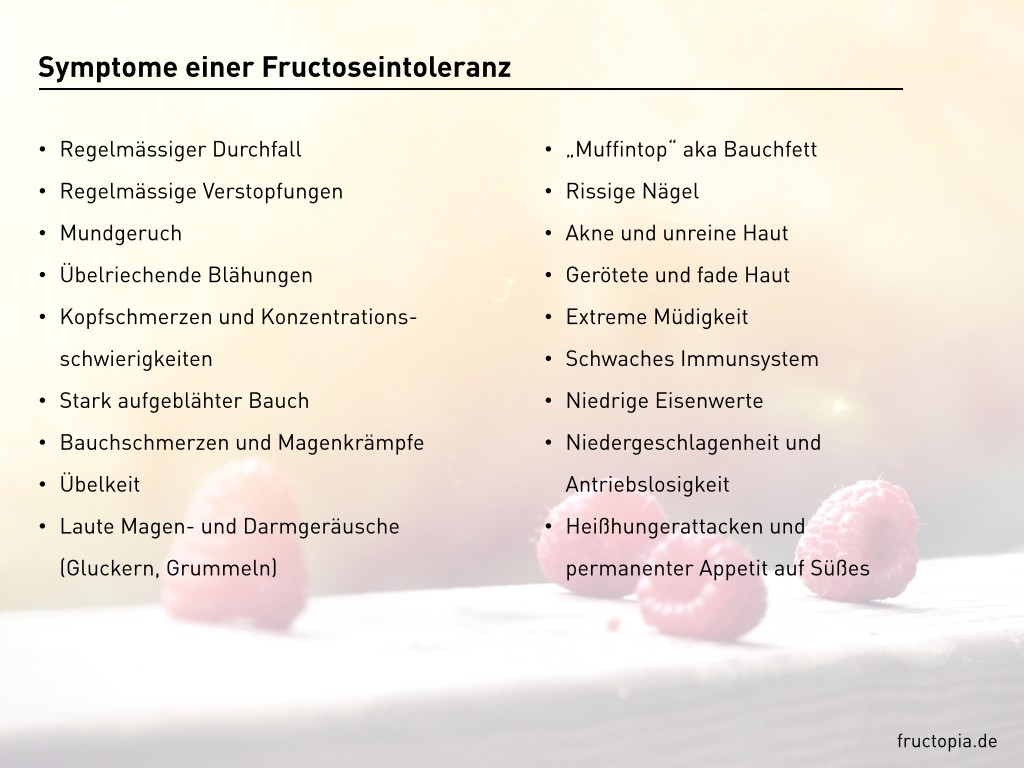 „So ein bisschen Bauchschmerzen, ein aufgeblähter Bauch und extreme Müdigkeit”. Das und keinen Pieps mehr hättet ihr vor 5 Jahren an Symptomen bei einer Fructoseintoleranz aus mir herausgekitzelt. Peinlich berührt war nach dieser Erklärung das Thema für mich gegessen.
„So ein bisschen Bauchschmerzen, ein aufgeblähter Bauch und extreme Müdigkeit”. Das und keinen Pieps mehr hättet ihr vor 5 Jahren an Symptomen bei einer Fructoseintoleranz aus mir herausgekitzelt. Peinlich berührt war nach dieser Erklärung das Thema für mich gegessen.
Wer heute fragt, bekommt mehr zu hören. Egal wann und wo es auf die “Leiden der jungen Fructopia” zu sprechen kommt, versuche ich möglichst offen davon zu berichten, was übermäßig viel Fructose und Zucker in unserem Essen anrichten kann.Wenn ich heute Symptome auslasse, dann schlichtweg, weil ich vergesse, wie dreckig es mir damals wirklich ging. Und siehe da, so schlimm kommt das in der Regel bei meinen Gesprächspartnern gar nicht an. Die Rückfragen werden zahlreicher und zuckerfreie Rezepte sind hoch im Kurs. Aber vor allem leuchtet beim Gegenüber immer wieder die Frage auf “Vertrage ich vielleicht auch keine Fructose?”.
…
Going Gluten Free IV: A side note on dairy
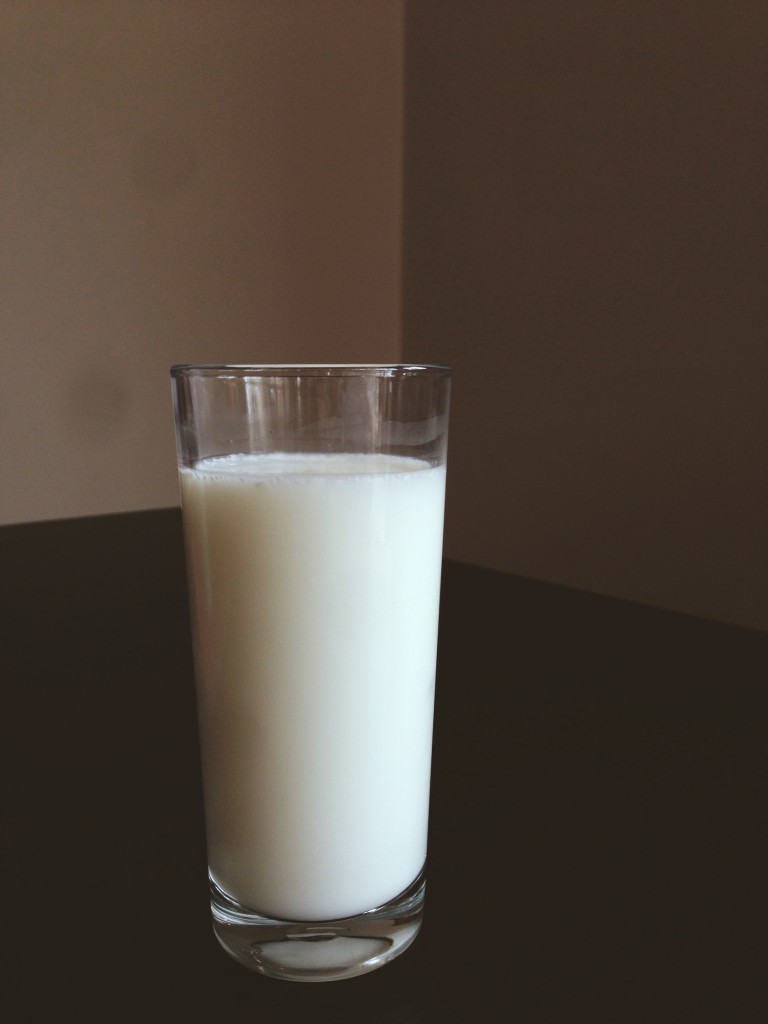 Last year, during my initial phase of going gluten free I reflected not only on my wheat consumption but also on my diet in general. I figured that I was consuming a lot more dairy here in Istanbul than I used to do back in Berlin. Since moving here I had yoghurt for breakfast every single morning, drank many, many café lattes and ate lots of salads topped with loads of feta cheese. Everybody knows, too much of anything is never good, so I felt the urge to put a halt on this. In the back of my head I developed this thought that just maybe I could hit two birds with one stone: Going gluten and dairy free at the same time. I mean, why not? I was about to change my diet completely anyway, right?
Last year, during my initial phase of going gluten free I reflected not only on my wheat consumption but also on my diet in general. I figured that I was consuming a lot more dairy here in Istanbul than I used to do back in Berlin. Since moving here I had yoghurt for breakfast every single morning, drank many, many café lattes and ate lots of salads topped with loads of feta cheese. Everybody knows, too much of anything is never good, so I felt the urge to put a halt on this. In the back of my head I developed this thought that just maybe I could hit two birds with one stone: Going gluten and dairy free at the same time. I mean, why not? I was about to change my diet completely anyway, right?
Some of you might break out in hysterical laughter right now and I can’t even blame you.
Little did I now, how time consuming and sometimes frustrating it would be to go gluten free. This process once again put all my previously acquired eating habits into question (see Unlearning snacking). Cutting out dairy as well was just as naive as believing in sticking to one’s New Year’s resolution. …
Why it’s good that fructose is bad for us
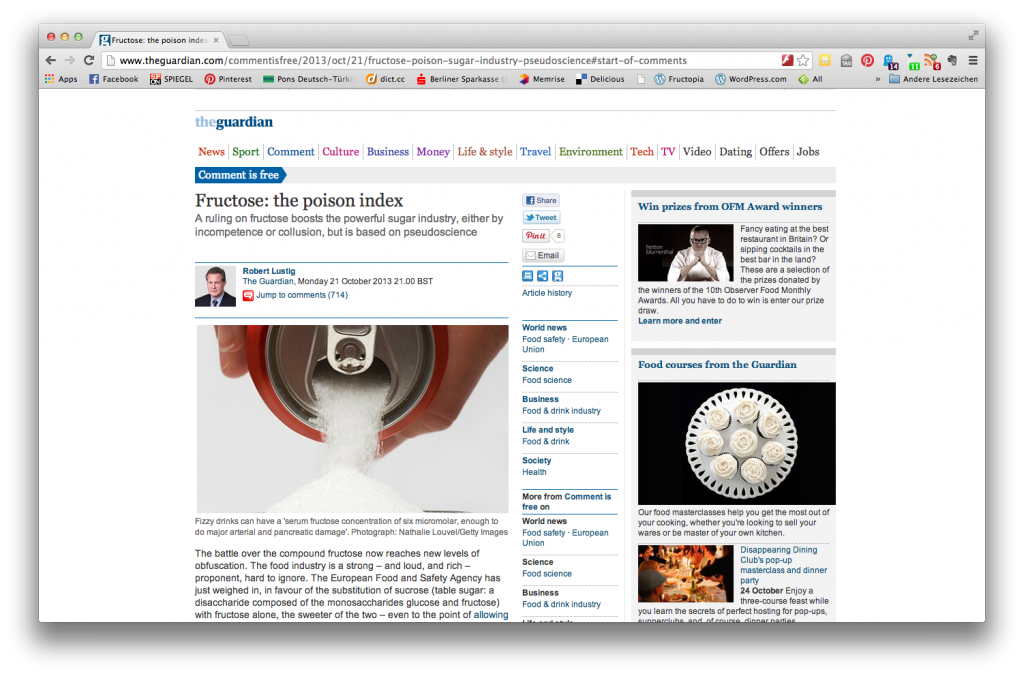 From time to time I know it can be a bit tiring to be friends with, related to or in a relationship with me, the adamant no-fructose-advocate that I am. Even four years after being diagnosed with fructose malabsorption, I’m not showing any signs of fatigue in bringing up the fructose topic. Be it by making critical observations on why certain foods are unhealthy (which I usually make just as a friend is about to dive into their said plate of food). or in response to somebody once again asking me, why (after turning down the piece of cake) I won’t have any of the fruit either. Enter the sugar-police! I always try not to lecture, rather to explain. I understand that my little sister for example is not keen on hearing my opinions on sugar, as she is just about to have a bite of her delicious looking cupcake. (I am still the older sister, though, so bear with me) In the end, all I am really trying to say is that I am concerned about the health of my loved ones.
From time to time I know it can be a bit tiring to be friends with, related to or in a relationship with me, the adamant no-fructose-advocate that I am. Even four years after being diagnosed with fructose malabsorption, I’m not showing any signs of fatigue in bringing up the fructose topic. Be it by making critical observations on why certain foods are unhealthy (which I usually make just as a friend is about to dive into their said plate of food). or in response to somebody once again asking me, why (after turning down the piece of cake) I won’t have any of the fruit either. Enter the sugar-police! I always try not to lecture, rather to explain. I understand that my little sister for example is not keen on hearing my opinions on sugar, as she is just about to have a bite of her delicious looking cupcake. (I am still the older sister, though, so bear with me) In the end, all I am really trying to say is that I am concerned about the health of my loved ones.
Good to see that my relentless fructose free input has left some positive marks within my circle of friends. They seem much more conscious about handling their daily sugar intake and some have even taken to research on their own. Lucky me, sometimes they share an interesting article or two with me. Lucky you, sometimes I share those articles with you! So here goes: …
A good week starts with some good reads
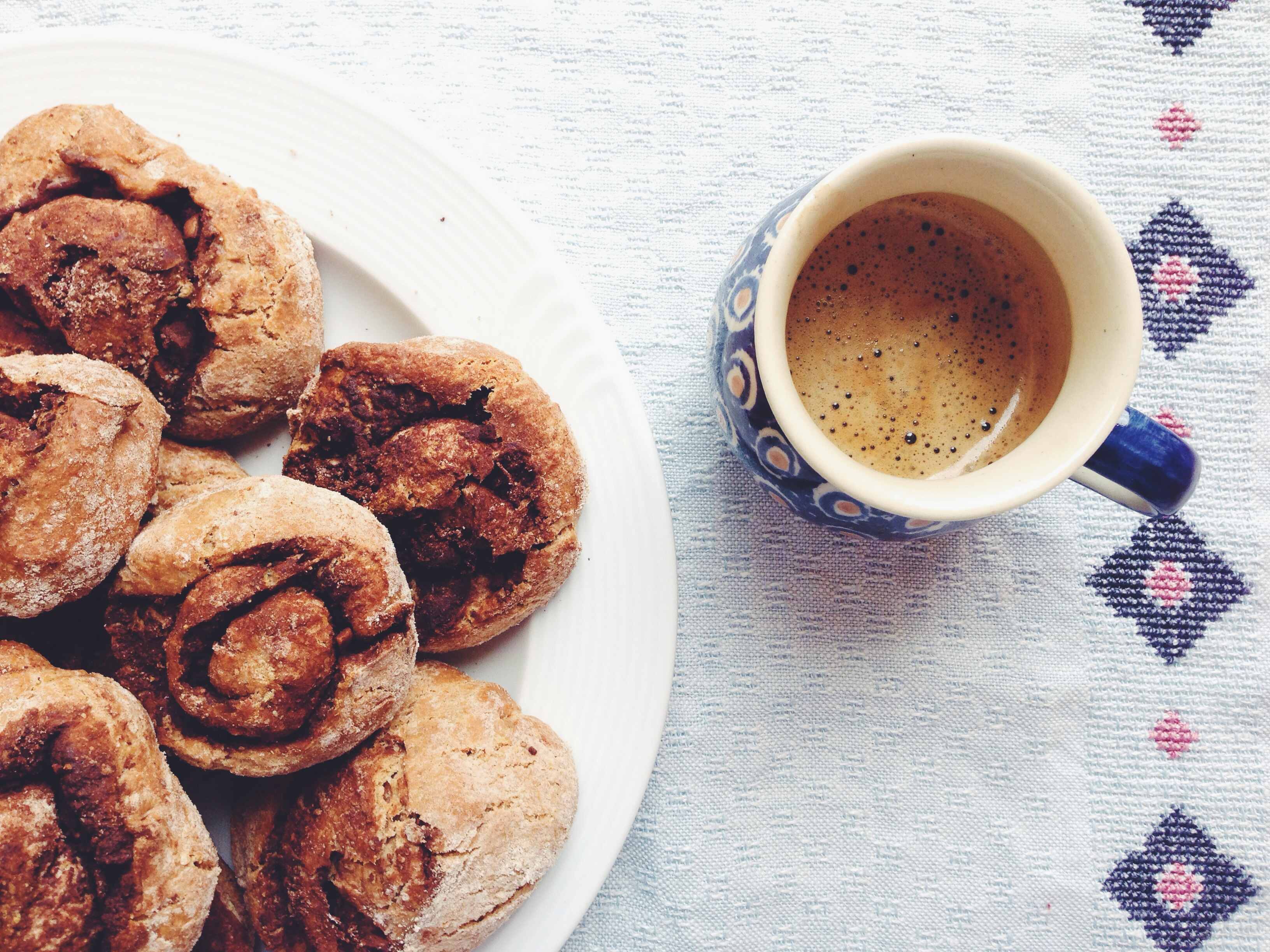
I spent the past two weeks suffering from a proper cold, rushing to a couple of last minute “let’s have a coffee”-meets with friends in Berlin and preparing myself for our return to Istanbul. Though it was only three weeks, it feels as though I’ve been away for ages. I’m actually having some difficulties getting back on track. Maybe it’s because we didn’t just return to Istanbul, no, at the same time we moved into a new interim flat. Don’t get me wrong, it’s a really cozy place with huge windows for the sun to fill the rooms with its warming autumnal light. It’s just a little strenuous adapting to a new place, new neighborhood, new rhythm once again, knowing all along that in about three months time we are going to need to find a new place to call home.
Also the trip itself back to Istanbul was quite a disappointment. I already told you about the frustration I experienced on the way to Berlin when SWISS didn’t manage to cater to my order of a gluten-free meal. During our stay in Berlin I called their customer service to make sure, this wouldn’t happen again on the way back. I was super surprised to learn that SWISS doesn’t respond to special meal requirements on short-distance flights and that it would be my own responsibility to prepare enough food to keep me going during the upcoming five-hour trip back from Berlin via Zurich and on to Istanbul. Not a big deal in their mind I guess. Thanks a lot SWISS for helping out. Not. Again. By the way, stunning three weeks after my mail they managed to answer to my mail. Three weeks! It’s 2013 by the way, not the 1980s.
Even though I prepared some food, which they almost didn’t let me bring onto the plane during the routine security checks, it was frustrating watching others being served a warm meal. I know it’s usually better to skip the crappy airplane food, but who cares when hungry, frustrated and on a trip back home, which is taking way too long. I mean, come on SWISS, it’s not like I asked for some crazy, exotic, out of this world, nut, grain, lactose and fructose free meal that includes some fresh salmon with millet and a delicious avocado-chocolate-mousse on the side. All I asked for was a gluten-free meal, which they proudly advertise on their website anyway. This failure in customer service left me munching on my banana, nuts and homemade cocoa spelt buns for the rest of the journey. The spelt buns were good, no doubt, but after having eaten five of them the day before, I was getting a bit tired of their taste. The reason why I won’t be sharing the recipe with you yet? I ended up using a lot more spelt flour than planned and need to work on the recipe again.
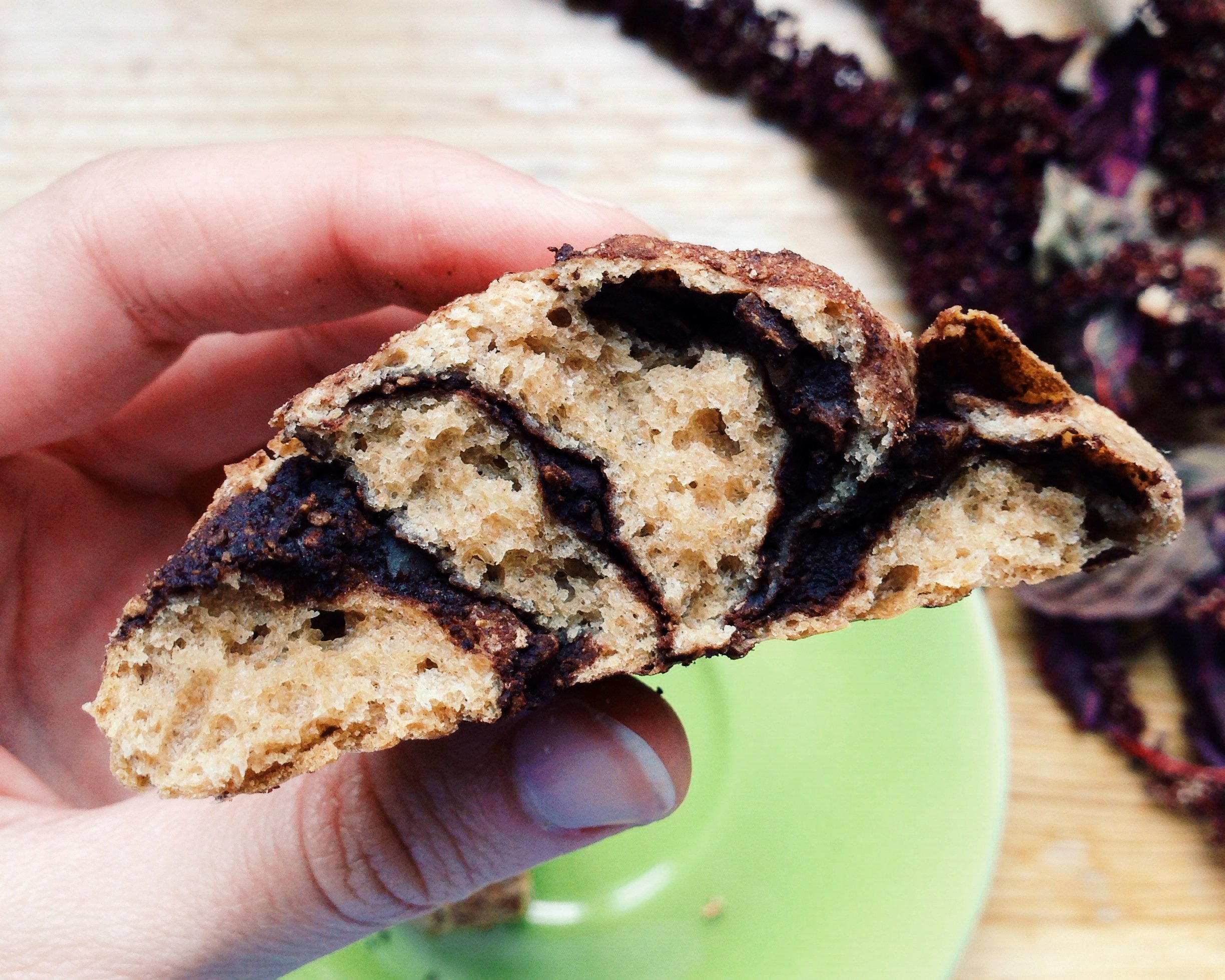
Well, so much for a quick update. Sorry about spreading those negative vibes. In any case, before I wish you an amazing start into another sunny fall week (or is it spring where you live?), I’d like to share two nice reads with you. A warming cup of turmeric milk should make these reads even more enjoyable 😉
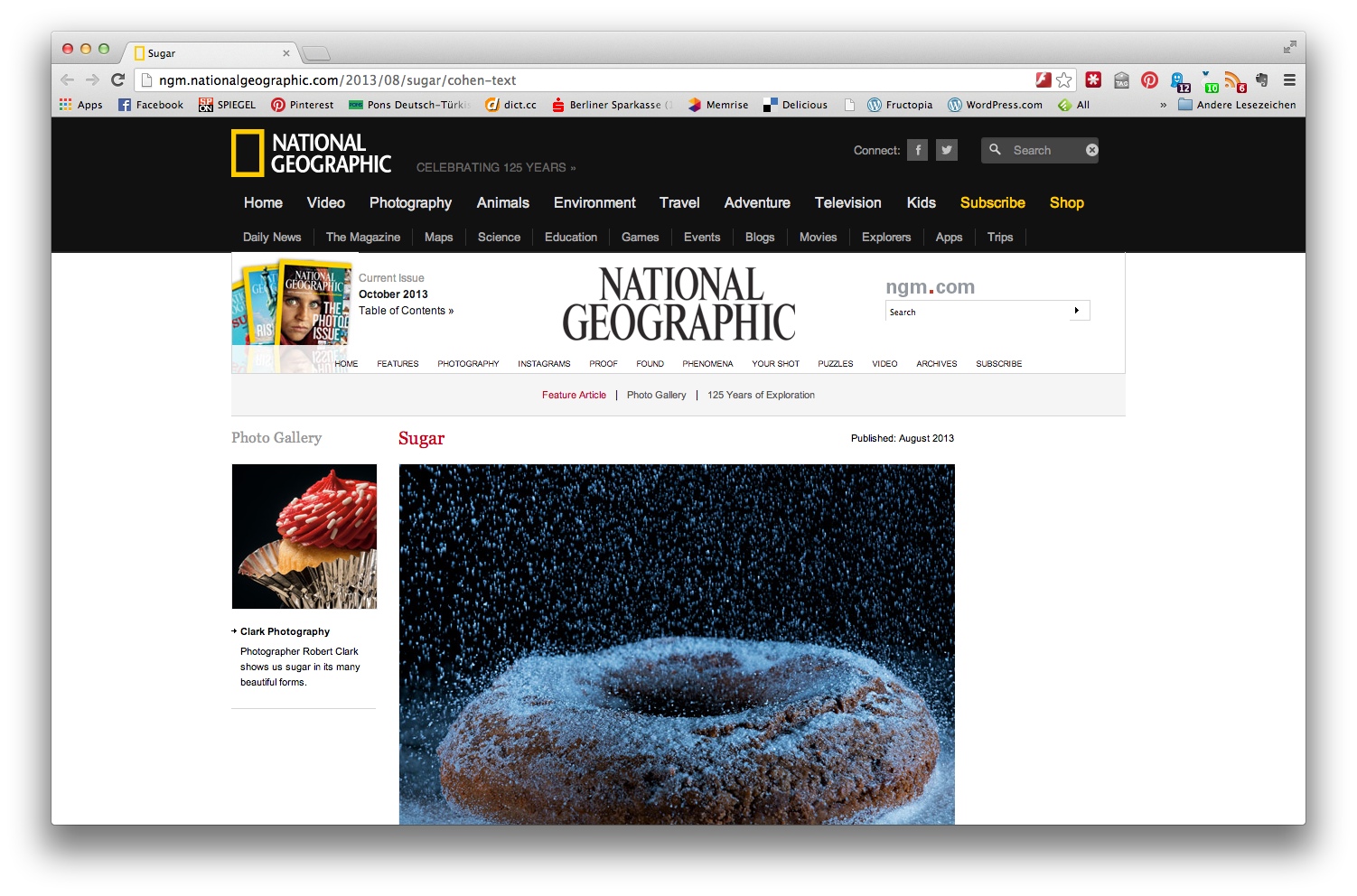
Research fructose malabsorption:
This article on the history of sugar published by the National Geographic magazine in August is a must read for everyone, not only for us fructmals. It explains how sugar virtually became an indispensable part of our daily lives and describes its journey from when “the sugar was so rare it was classified as a spice” to the point when “sugar began to change to a staple, first for the middle class, then for the poor”: Sugar, National Geographic
Also, if you are new to avoiding gluten, check out these helpful hints on going gluten-free. My favorite “Be prepared!” (Beware: The author does not follow a fructose free diet so some of the following food recommendations may cause your tummy some serious trouble): Helpful Hints On Going Gluten Free from Naturopath, Jules Galloway…
On to-do lists, gluten, birthdays and fructose
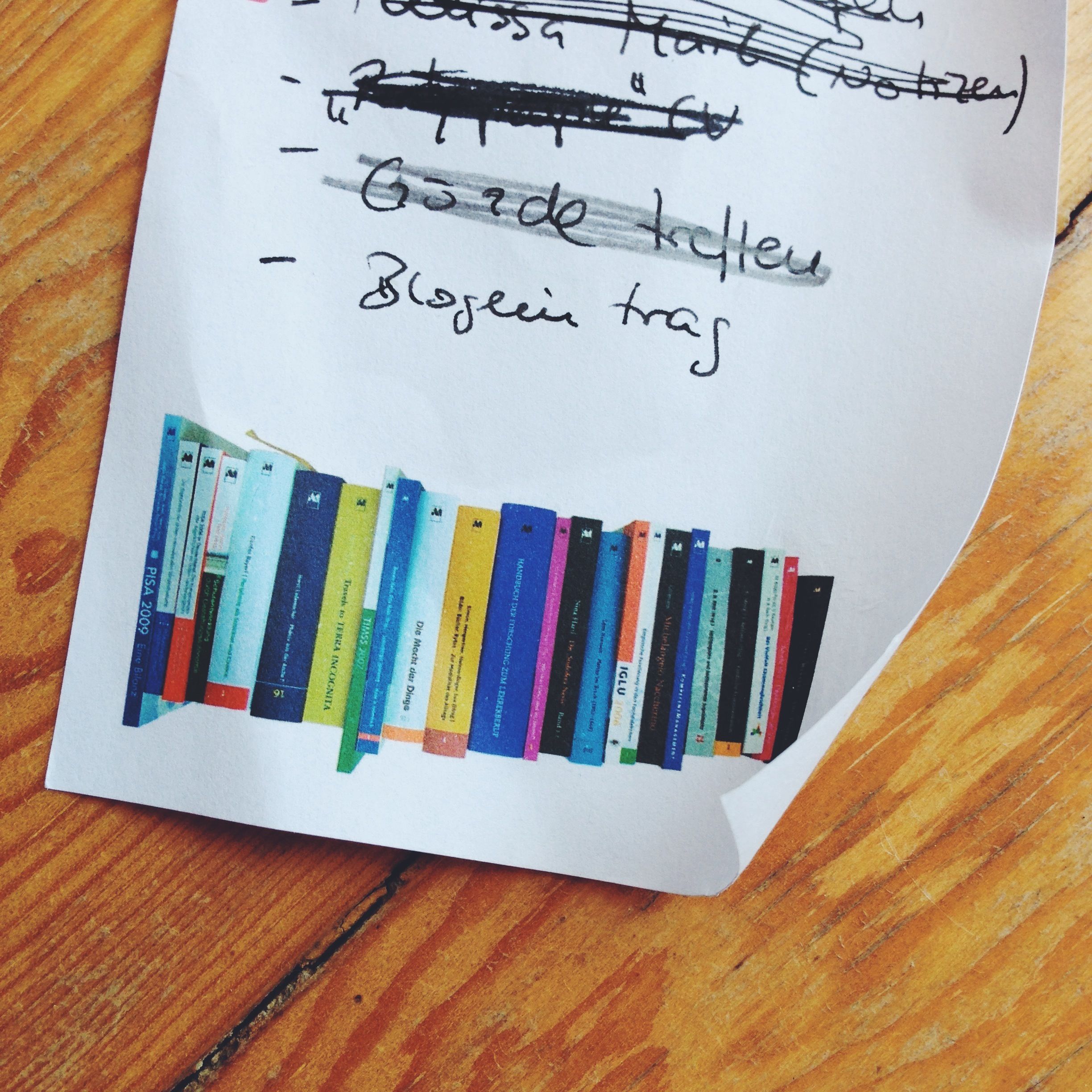
I‘m a big fan of to-do lists, both handwritten and digital. I also love getting the individual to-dos, want-to-dos or whatever you like to call them depending on their respective level of fun back off my list and off my back for good. But sometimes one of the to-dos decides to stay on the list. It is times like those, when I simply can’t complete the job at hand. Instead that small to-do becomes a ubiquitous mental note, floating above of my inner mess of thoughts, making me more miserable and more afraid to tackle it with every day I’ve failed to approach it. I hate it. Believe me, I’m not talking about some dreadful task here. I just hate it, because I know perfectly well that getting it done would be an easy way to clear my mind. Yet I still fail to follow through.
This is why I was afraid to check the date of my last post here. I still haven’t looked it up. There is no need to. However long it has been since my last post I haven’t forgotten what I’d been meaning to tell you:
For one, we have been welcoming, hosting and seeing off a steady flood of visitors from home who seized their summer holidays as an opportunity to explore Istanbul with us. So there we were, guiding our guests, showing them around, running up and down the hills of this beautiful city at a constant average temperature of 32°C/90°F in the shade and taking a break here and there making me unlearn snacking for the ‘I’ve stopped counting’-est-time.
I also missed out on telling you that it’s been 8 weeks now since I cancelled wheat from my diet. I had kind a sudden sort of epiphany, when I realized why so many of you fellow fructose malabsorptioners avoid wheat. Food life has been quite adventurous since I started my gluten-free journey and there is much to tell you about in my next post.
We also celebrated a birthday, my very own thirtieth birthday to be precise, which I still find slightly weird realizing it is my own age. But if being in ones thirties means getting a fructose friendly cheesecake from my boyfriend I willingly embrace this new era. He kindly gave his permission to share the recipe too and so I will, shortly.
On another note I missed out on sharing the following article, which reminds us of why it’s a good thing, that fructose is bad for us and why it‘s worth it taking a stand against this little monster day in day out. Read it here. Found on No Sugarless Gum. Thanks for sharing Paige!
So much for my long overdue update. It was good to catch up. I’m looking forward to sharing more details on my newly acquired fructose AND gluten free eating habits with you soon! Have a great Sunday!
Video Tuesday: fructose research links
It’s been silent around here for the past three weeks. We went on a one week holiday only to return and find the city we live in has been turned upside down. Behaviors, moods, beliefs have changed. Istanbul is still as beautiful as it was, but the people living here and in the rest of the country have changed. The sheer violence that was used against peacefully demonstrating protestors shocked all of us in Turkey and many of you abroad, leaving us behind with terms bereft of meaning such as trust, freedom and democracy. Here we are, sitting in our home, approximately 800m from Taksim Square where the protests begun, reading, watching, talking, trying to understand facing many new questions. Right now it feels weird to go back to normal, working on and posting fructose friendly recipes with the pictures of people being chased down by police and fed with massive amounts of teargas still vivid in my head. So as for today, I will only share two videos with you.
The one is an ABC report on fructose in general including an interview with Robert Lustig, who also held an impressive lecture on fructose called “Sugar. The bitter truth”, a must-see for every fructose malabsorptioner.
The other one is a nice find by my boyfriend, illustrating the danger of processed food and what food industries made us believe to be “real” food. Watching both videos makes me actually happy once again that I had to cancel out fructose and processed foods from my diet. Enjoy!
Why its good that fructose is bad for us
Two weeks ago I shared an article by The Atlantic about a study on fructose. Reading articles like this makes me feel really good about making such an effort to eliminate fructose from my daily diet and also is a good motivation to stick to it in the future. So, I decided to use my research on fructose for something good and make “Why it’s good that fructose is bad for us” a regular series on Fructopia.
Today is Sunday and Sunday is movie day. Instead of choosing the latest Hollywood blockbuster, I recommend you watch this lecture called “Sugar: The Bitter Truth” by Dr. Lustig. I watched it the first time about two years ago, but I need to watch it again, because this lecture explains it all! It gets into detail describing what fructose actually is and what it does to your body, explaining why it is bad for us. Not being a native English speaker I didn’t understand every single word of the lecture, because it gets really scientific at some points. But don’t worry, you will get Dr. Lustig’s overall point.
The full lecture is about 90 minutes long, which sounds a bit tedious. But if you don’t make it through the whole video, stop at an interesting part and I’m sure you will continue to watch it tomorrow. Already three million other viewers made it through to the end 😉
P.S. Do you remember, when I said that I got the impression that mass media was finally gaining interest in fructose? Today a friend drew my attention to another good example. One of the major news sites in Germany Spiegel Online wrote an article about fructose malabsorption and they also referred to the study mentioned by The Atlantic. I hope this type of article will increase in number in the future. Here is the link.
Why its good that fructose is bad for us
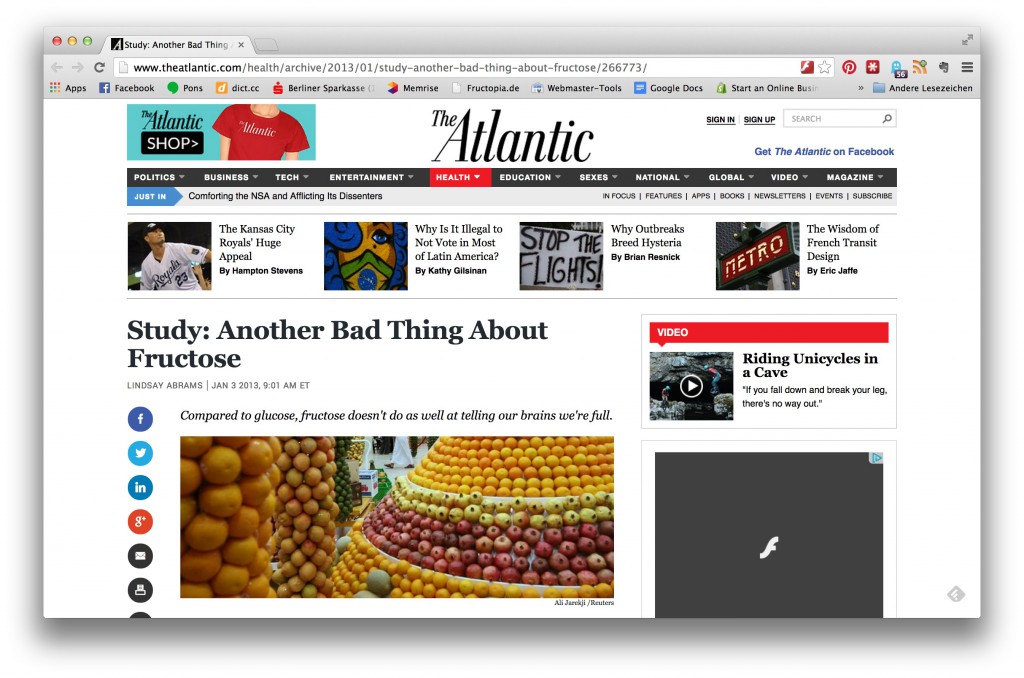
I found a really interesting article about the consumption of fructose on theatlantic.com and didn’t want to deprive you of it. Seeing an article about this topic at The Atlantic gives me the impression that fructose has finally arrived in mass media and therefore in mass consciousness. Which is a good thing after all, don’t you think?
The article itself does not cover fructose malabsorption in particular, but research on fructose in general and is interesting nevertheless. And it makes me feel really good about keeping my fructose intake at a minimum. So why is that? …
Enter, fructose malabsorption
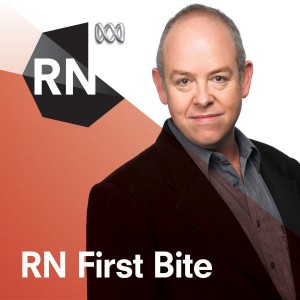
I’d like to share a 15 minute radio report about fructose malabsorption with you today, which I found on Fructose Free Me. The piece aired on Radio National Australia in December and gives a nice introduction on fructose malabsorption. It talks about the hydrogen breath test, which you have to take to find out whether you are fructose intolerant or not and discusses the rise of the disease.
I was surprised that the directors of the show didn’t hold back on the problems and difficulties people with fructose malabsorption suffer from. I’m used to newspaper articles claiming that, for example, “the abandonment of fructose from the daily diet usually leads to full recovery” , while failing to mention how difficult impossible and burdening it is to exclude fructose from one’s daily diet. I could freak out when something of the sorts gets published. But this radio report is different. The directors don’t euphemize fructose malabsorption, but at the same time they manage to give hope that it is still possible to enjoy different foods without fructose.
On a side note, what I find remarkable is that English literature usually refers to fructose malabsorption instead of fructose intolerance, while in Germany it is the other way round. German literature refers to fructose intolerance to describe the disease. I wonder why these differences are made. Does anybody have a clue?
At the end of the show the hosts also talk to Dr. Sue Shepard, who is well known for her work on fructose malabsorption and celiac decease. She introduces the FODMAP diet. You may have heard about this diet, as it is often referred to in English speaking sources. FODMAP stands for “Fermentable, Oligo-, Di-, Mono-saccharides and Polyols” thus summarizing foods that should be avoided when suffering from fructose malabsorption. On a personal level, I figured that it doesn’t make sense to stick to this guide as it eliminates a lot of foods I actually handle pretty well like the mentioned cream or cottage cheese (of course they have to be plain in flavor, no funky ingredients like onion powder etc.) That is why I don’t use FODMAP as a guideline for my daily nutrition.
Enough said, here is the link to the radio show “Tummy troubles: The rise of fructose malabsorption”.
(Source: Radio National)
You should check out the other research articles on Fructose Free Me. If you are gluten-free, it offers some nice gluten-free recipes as well.
